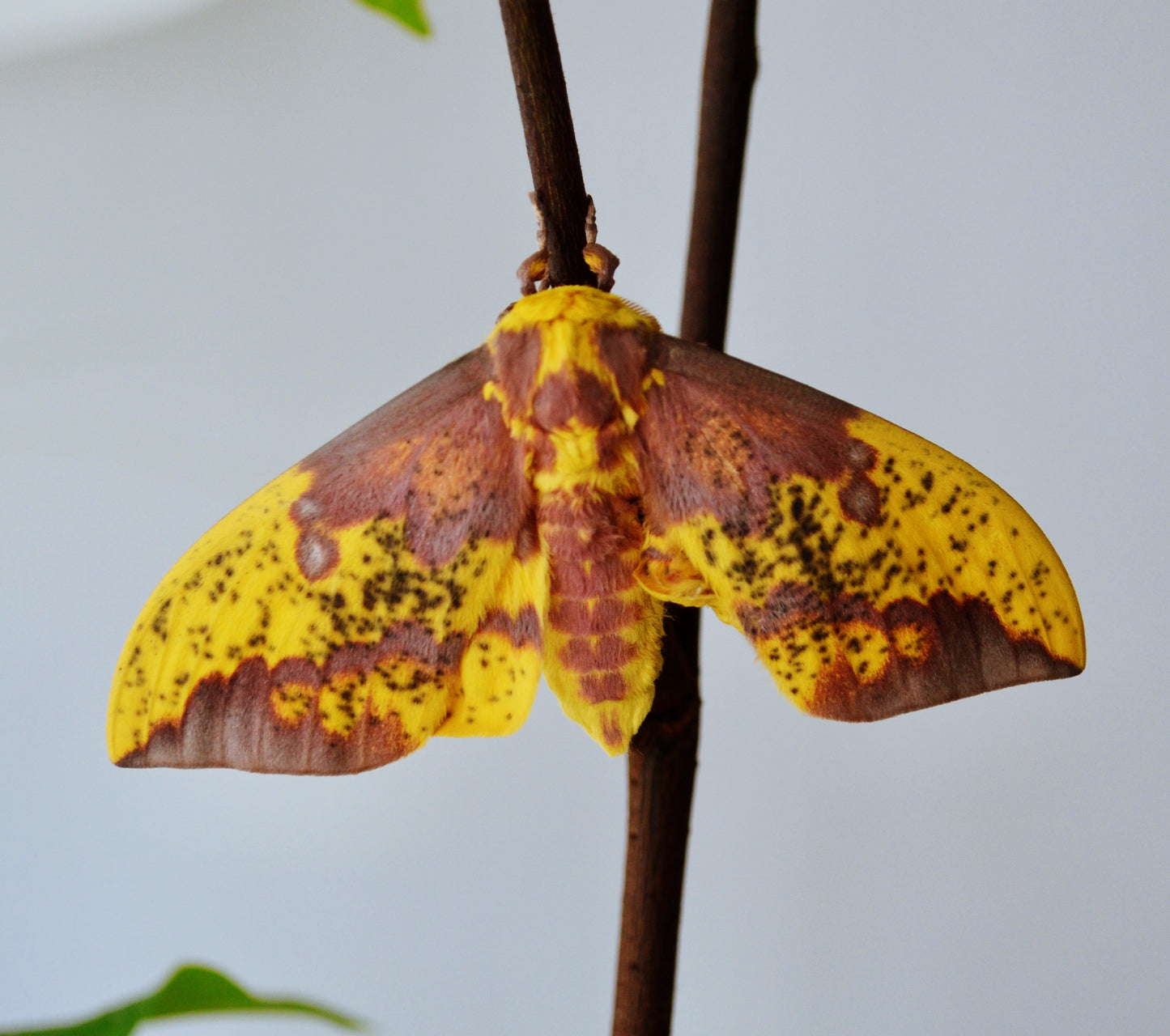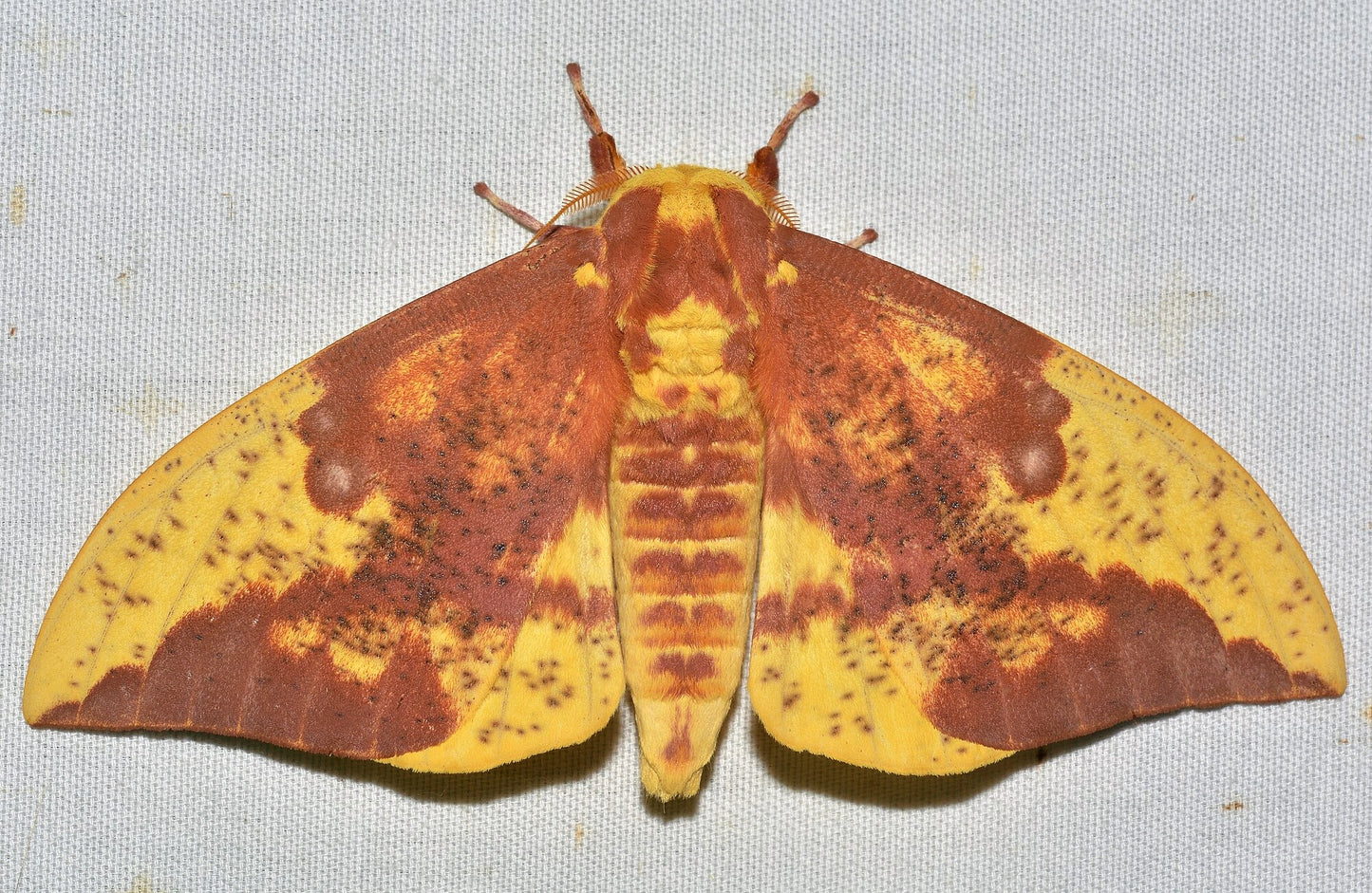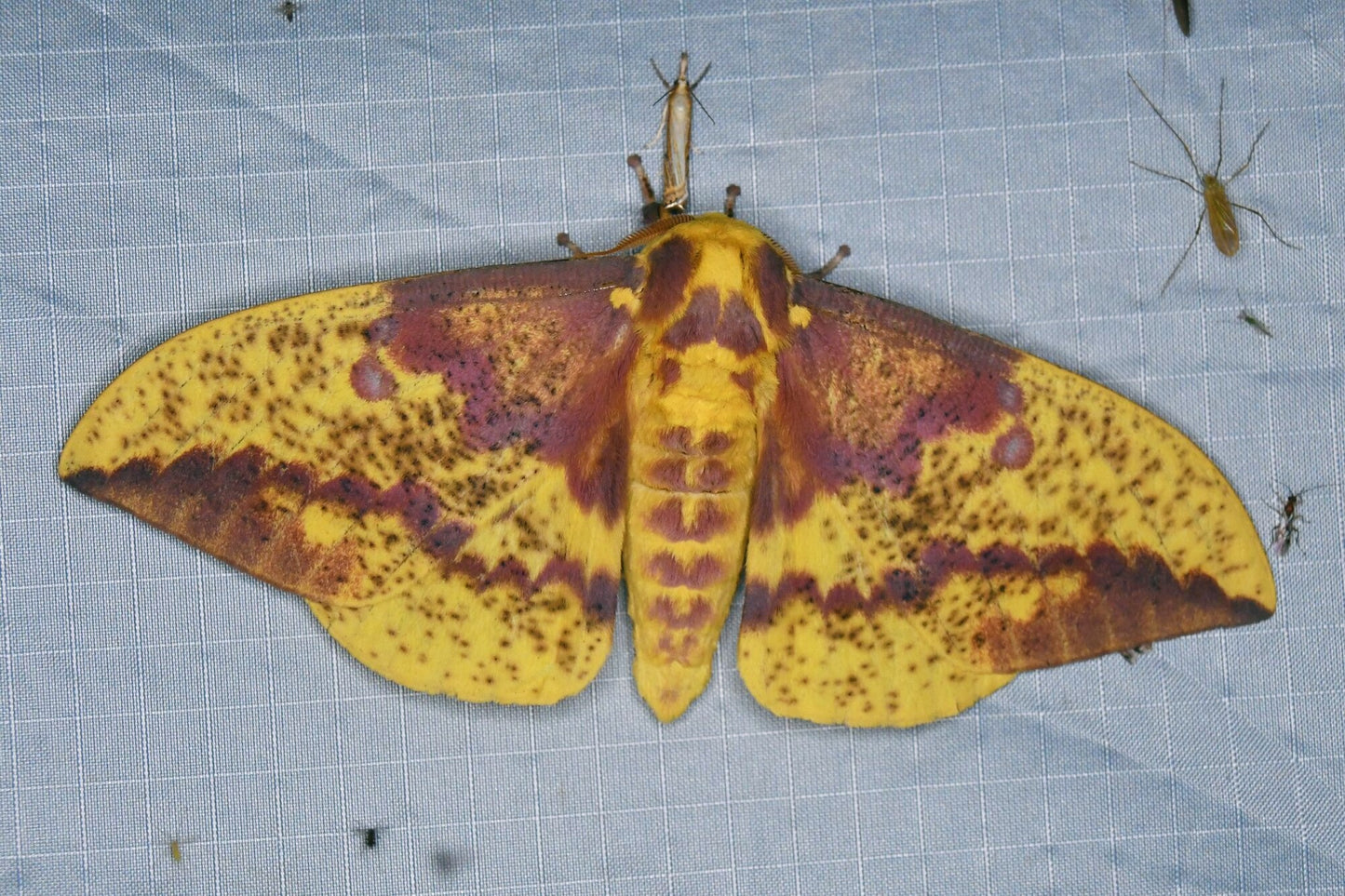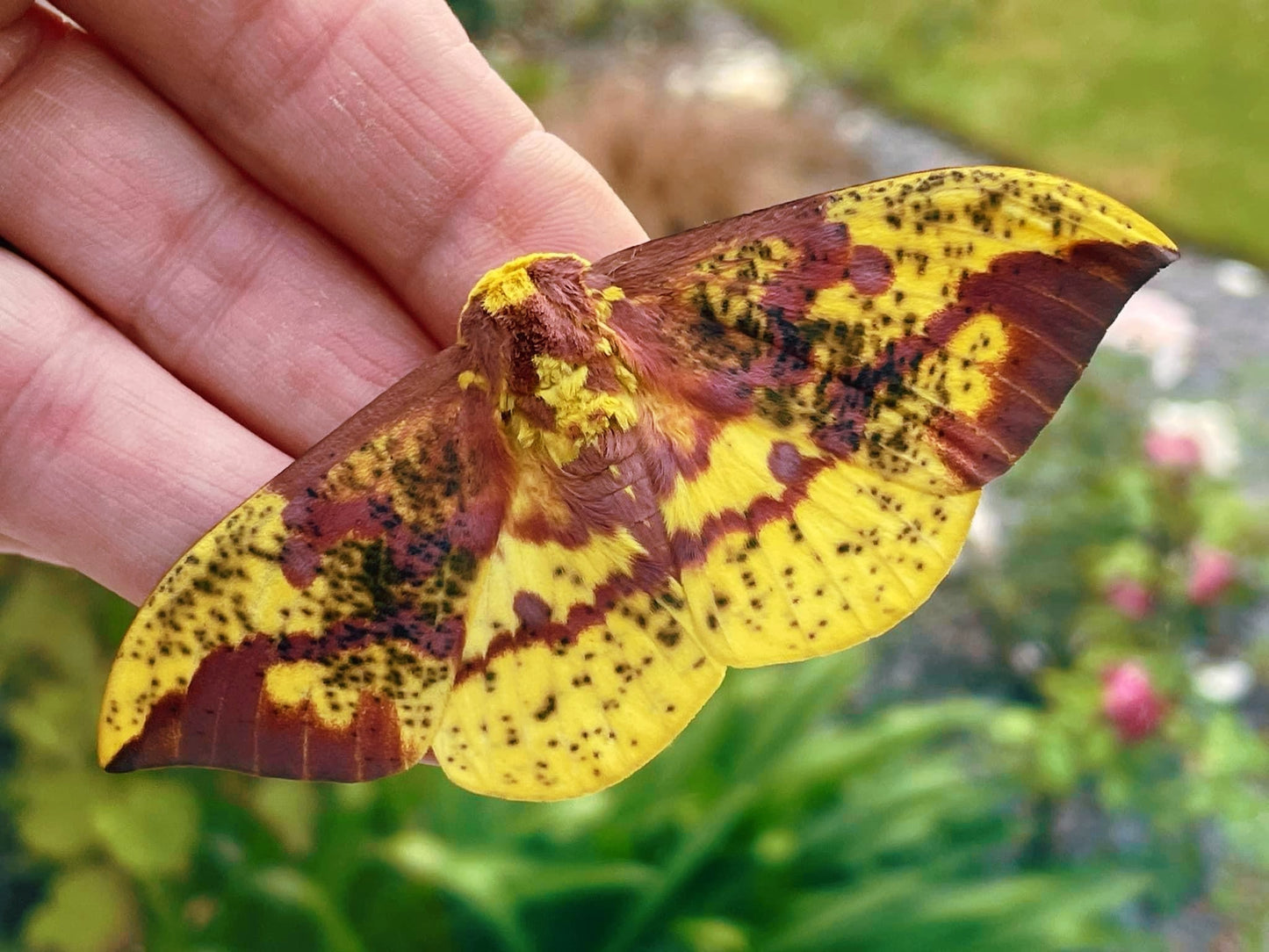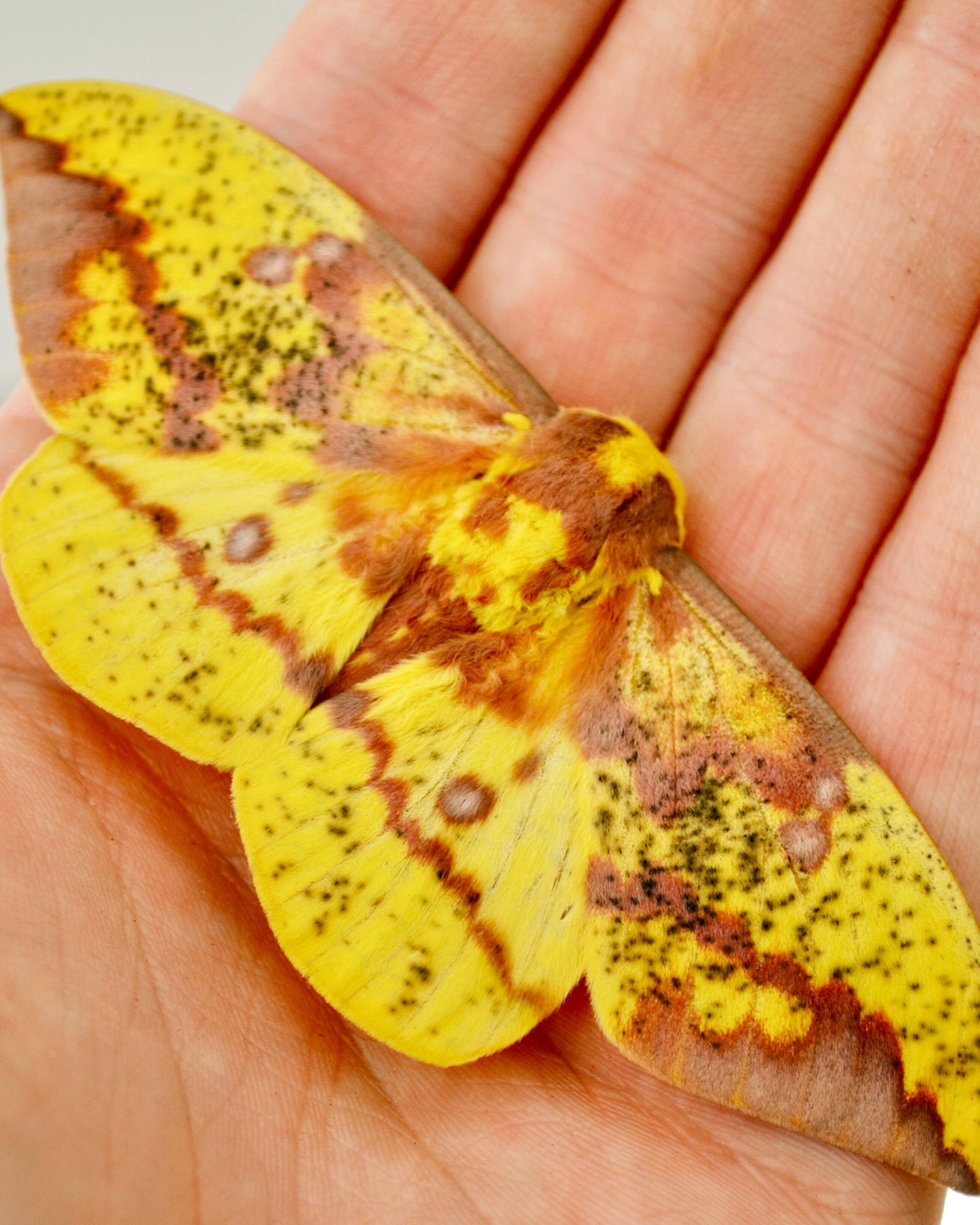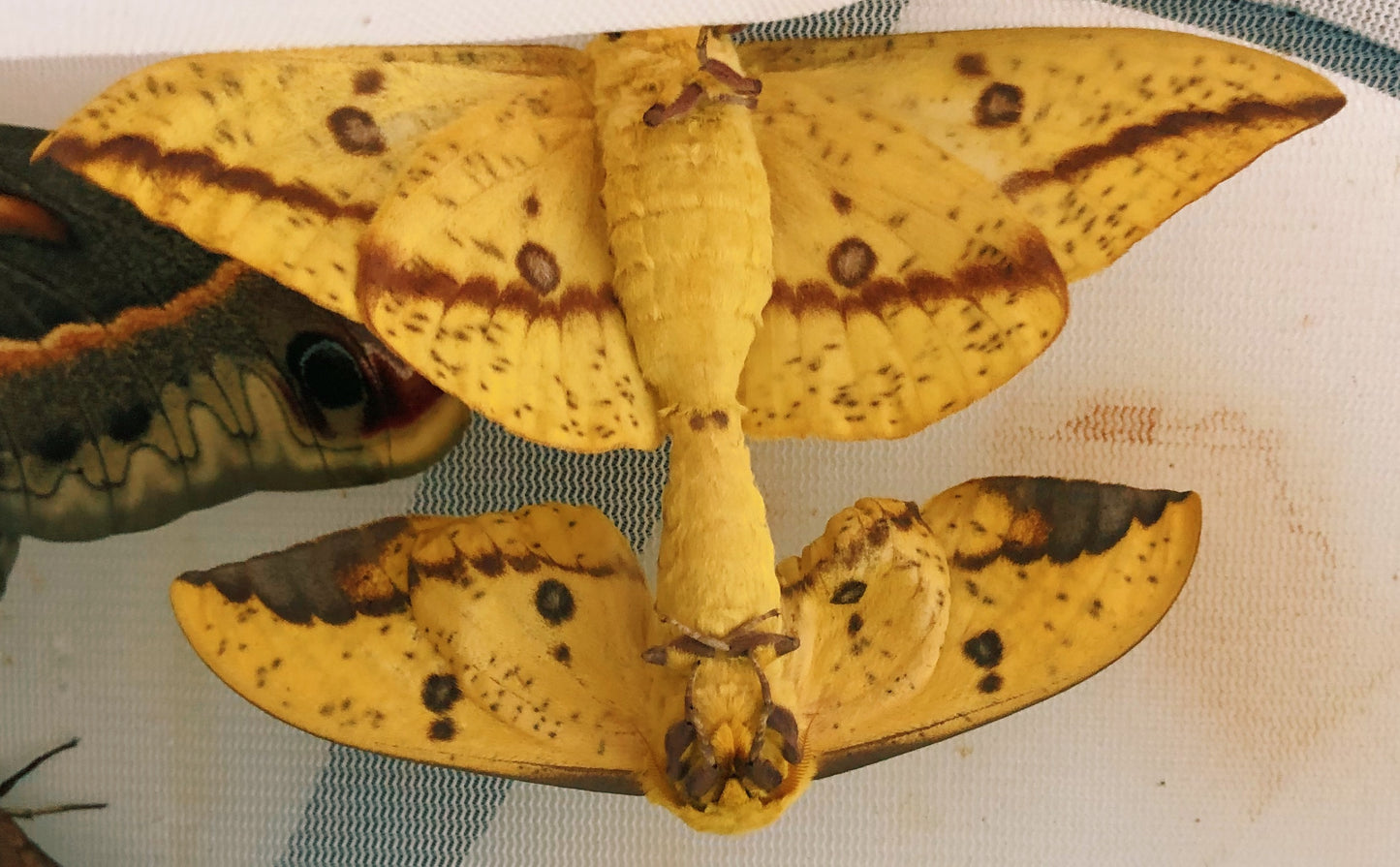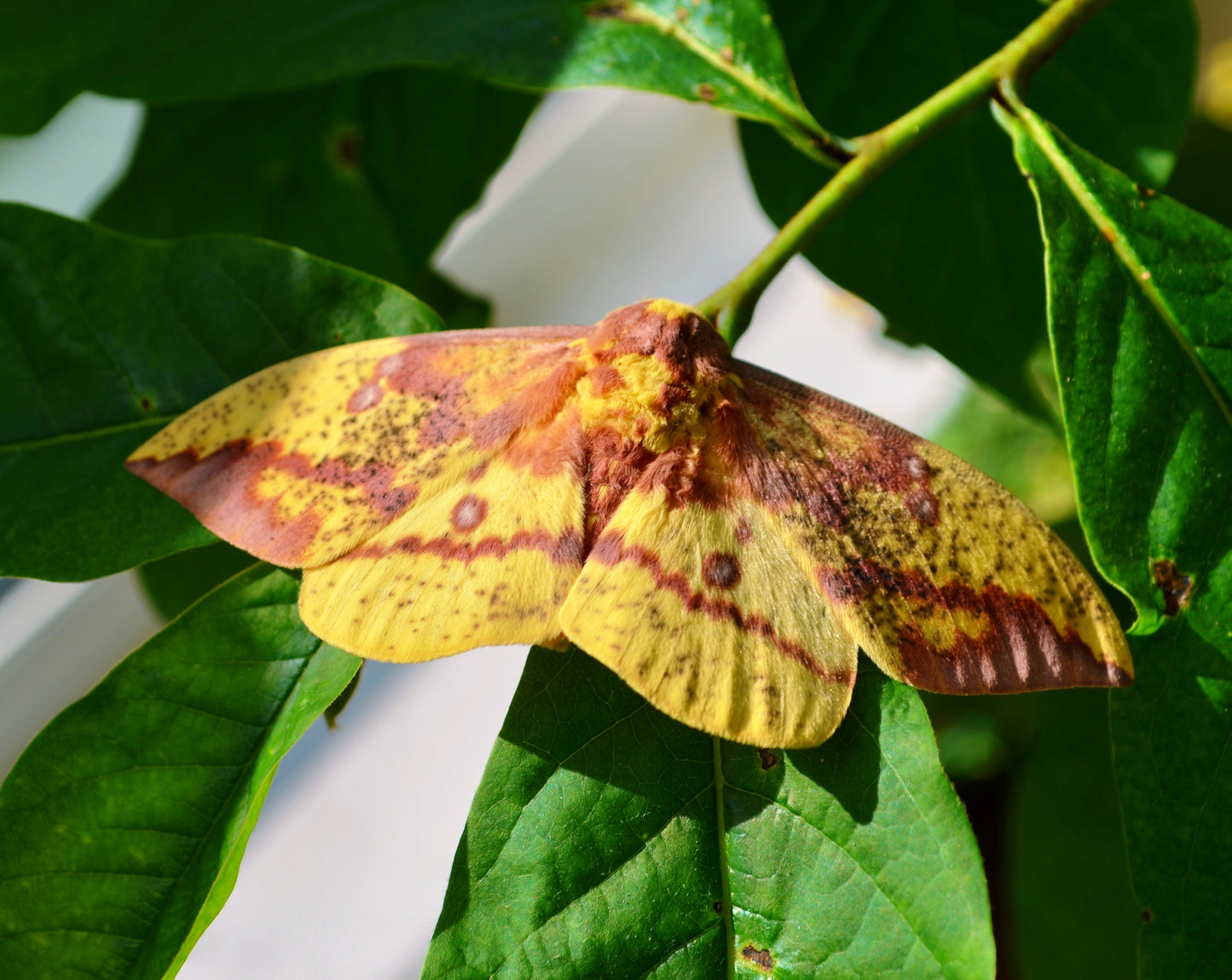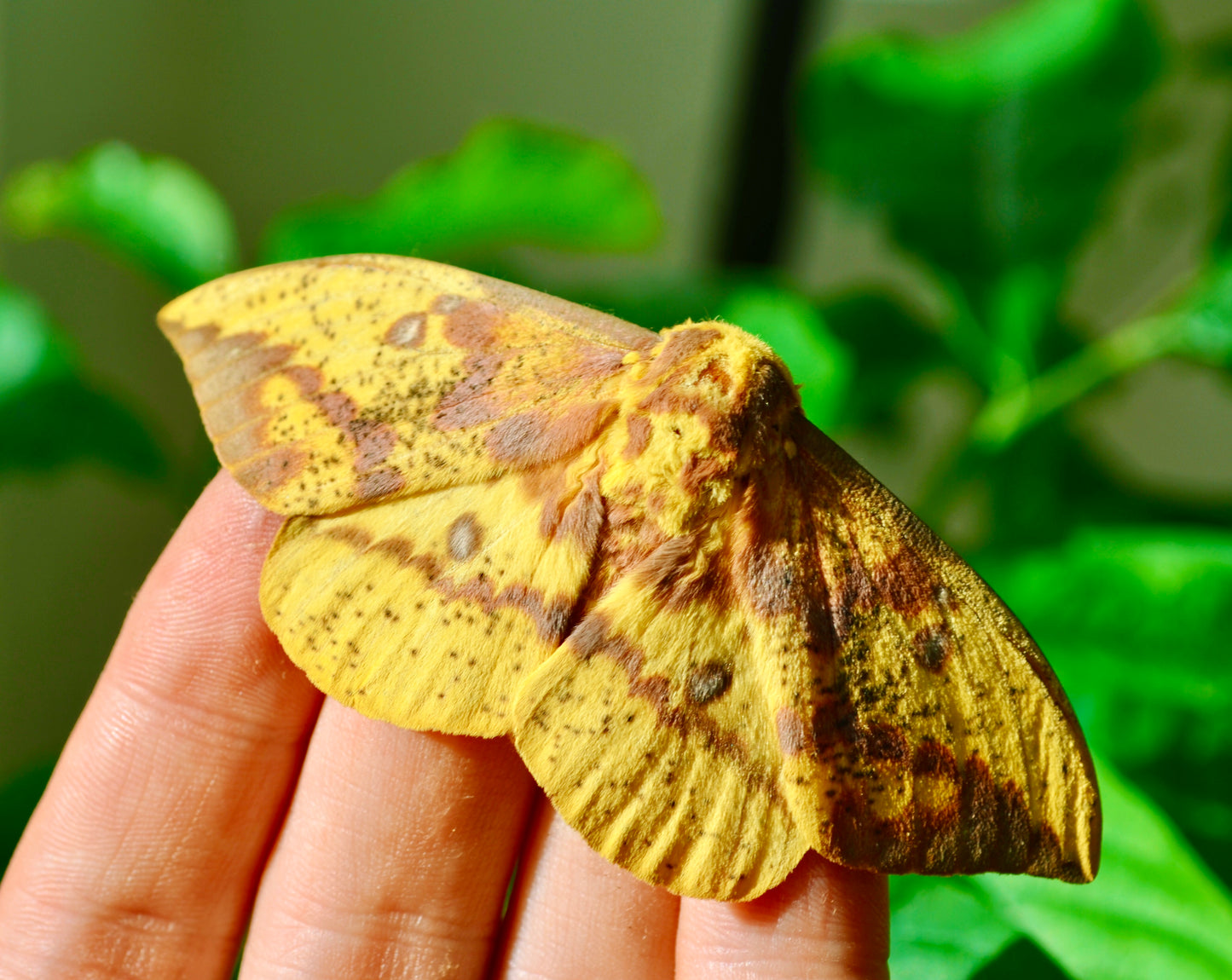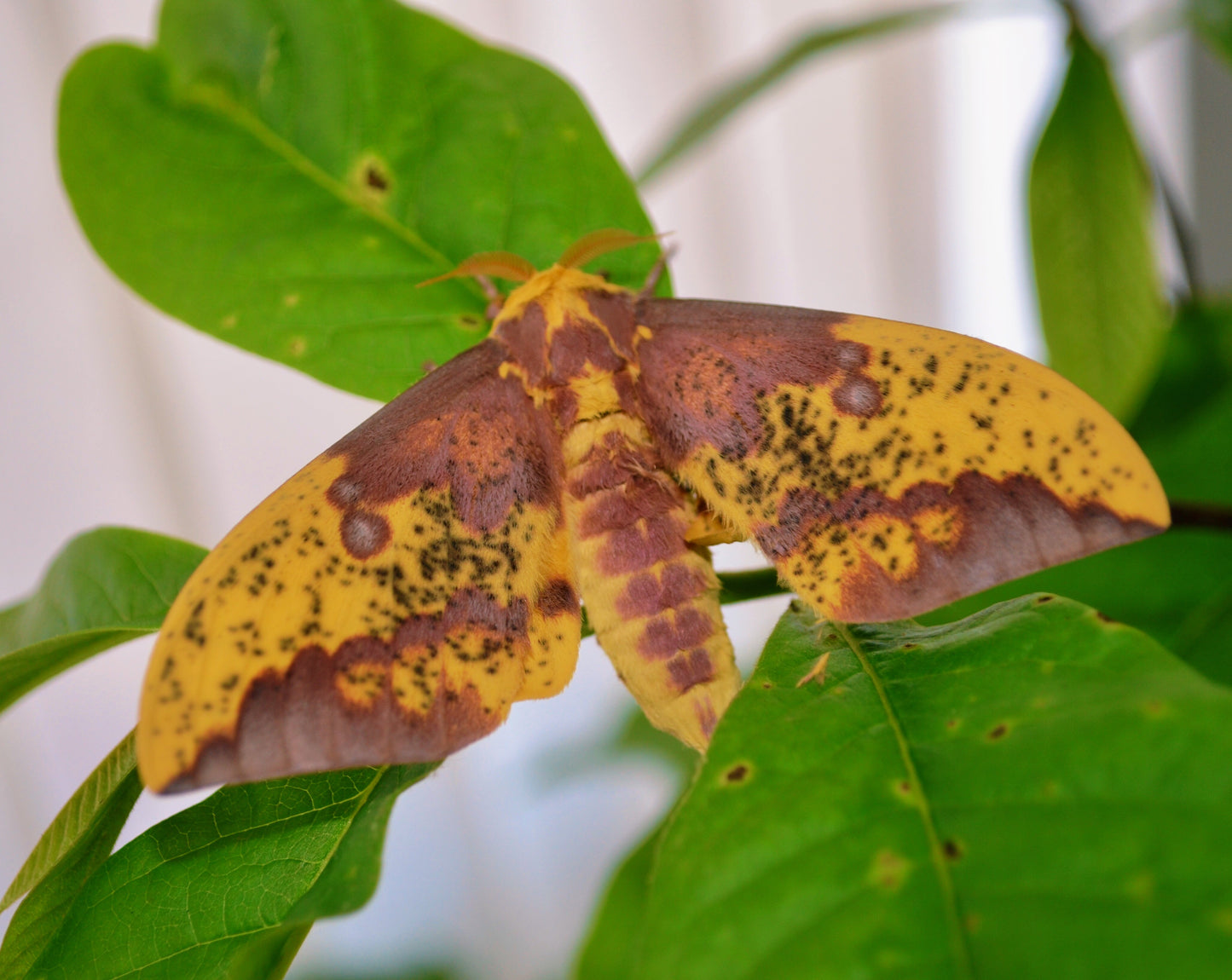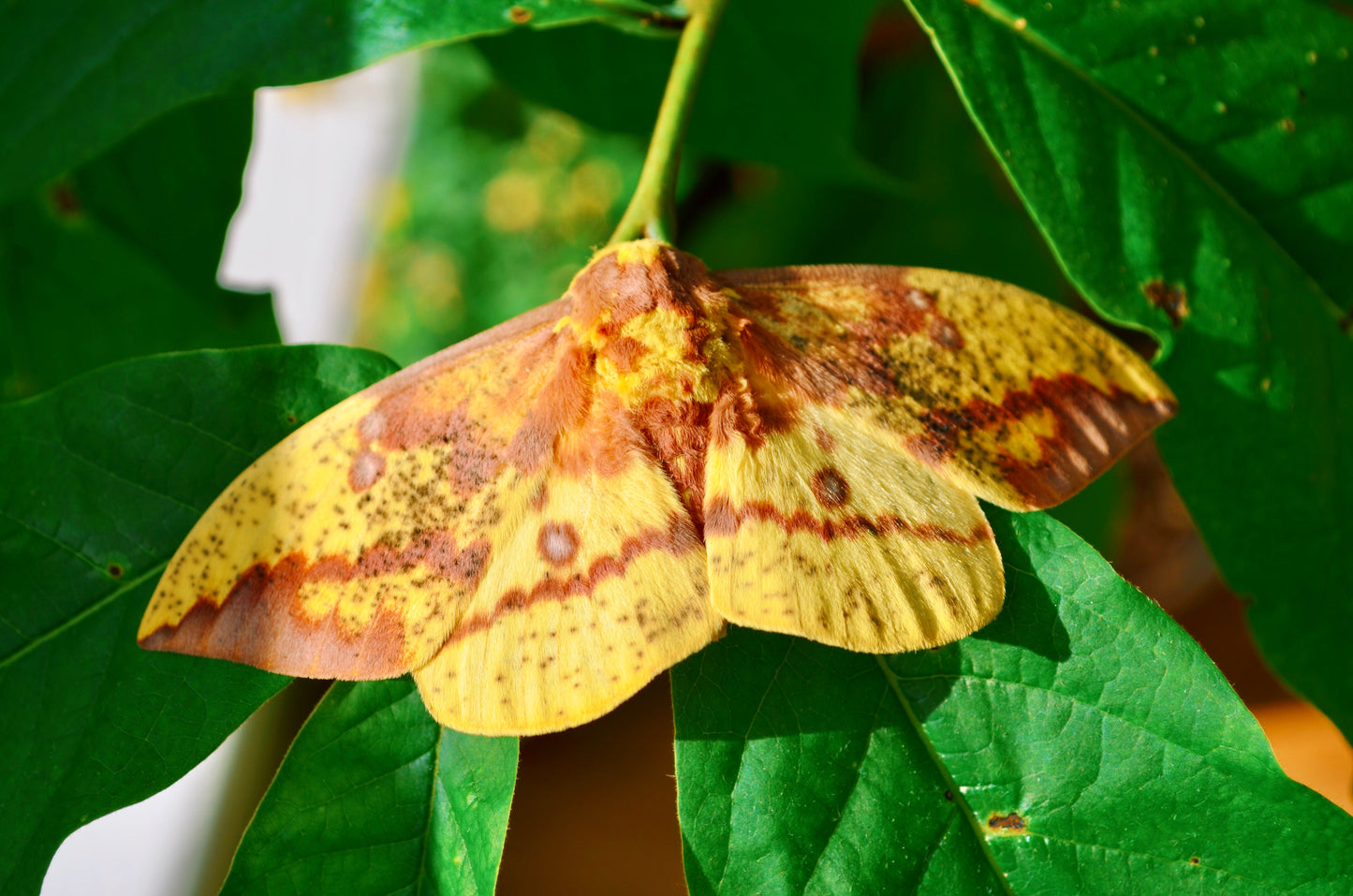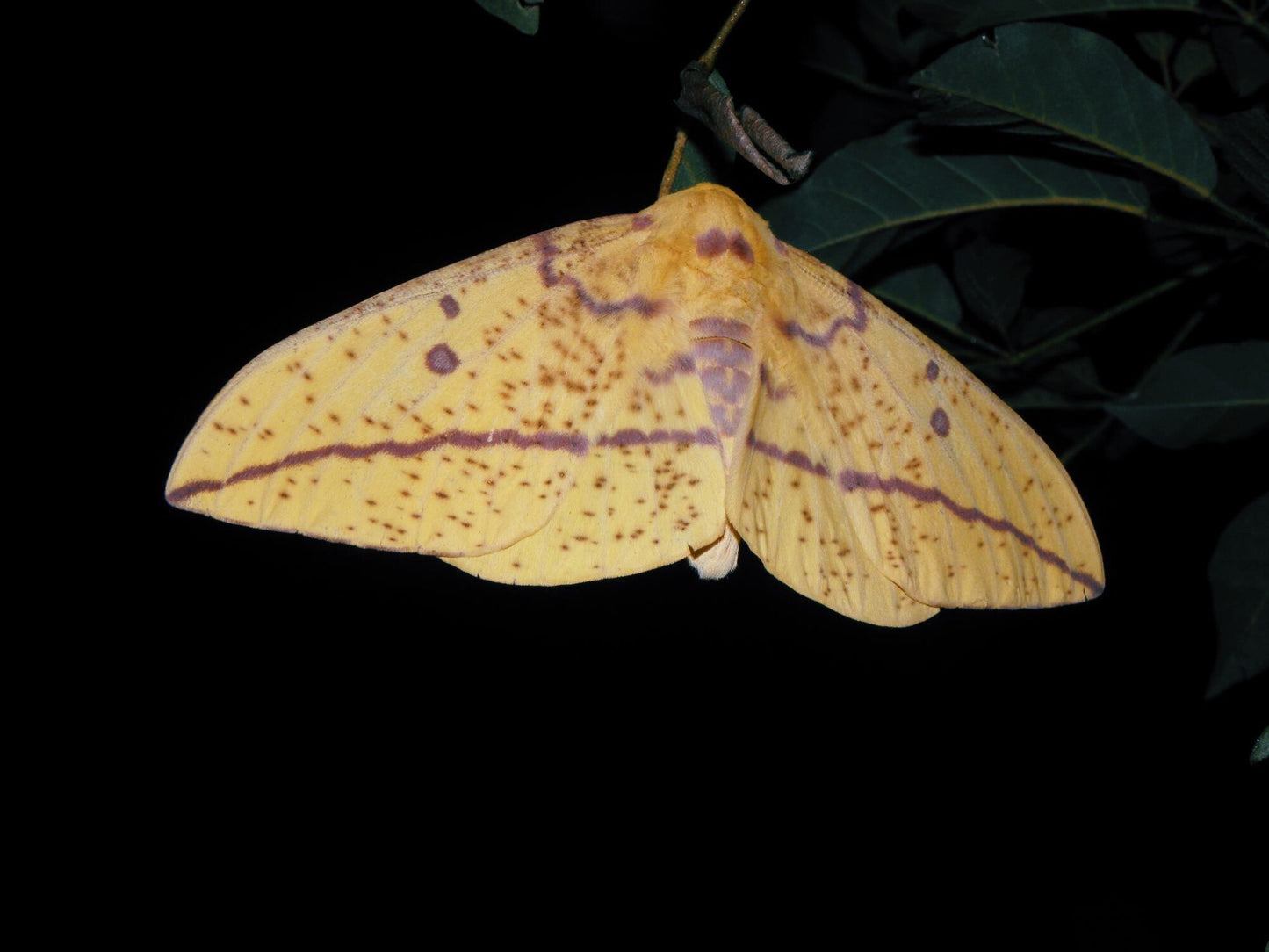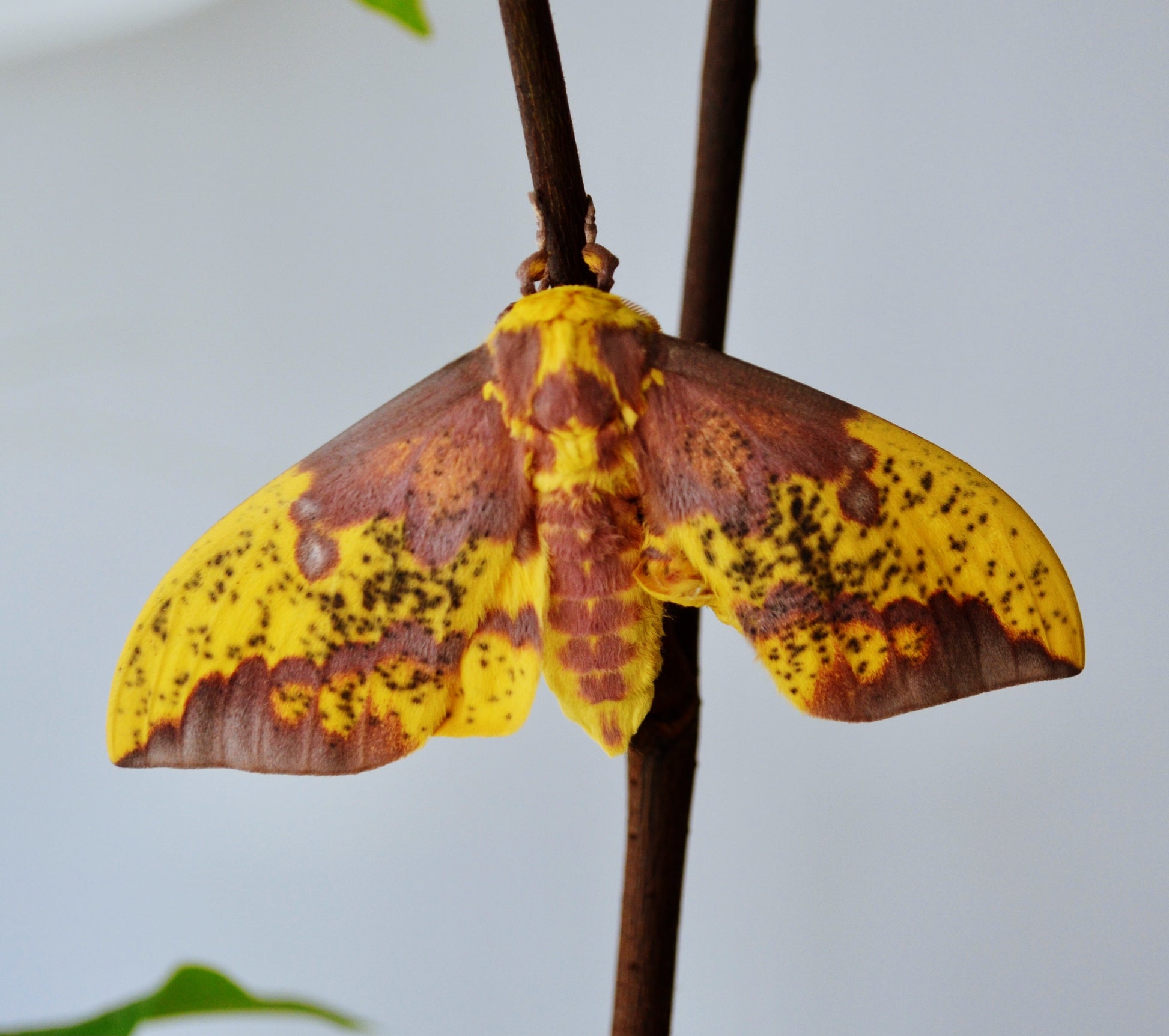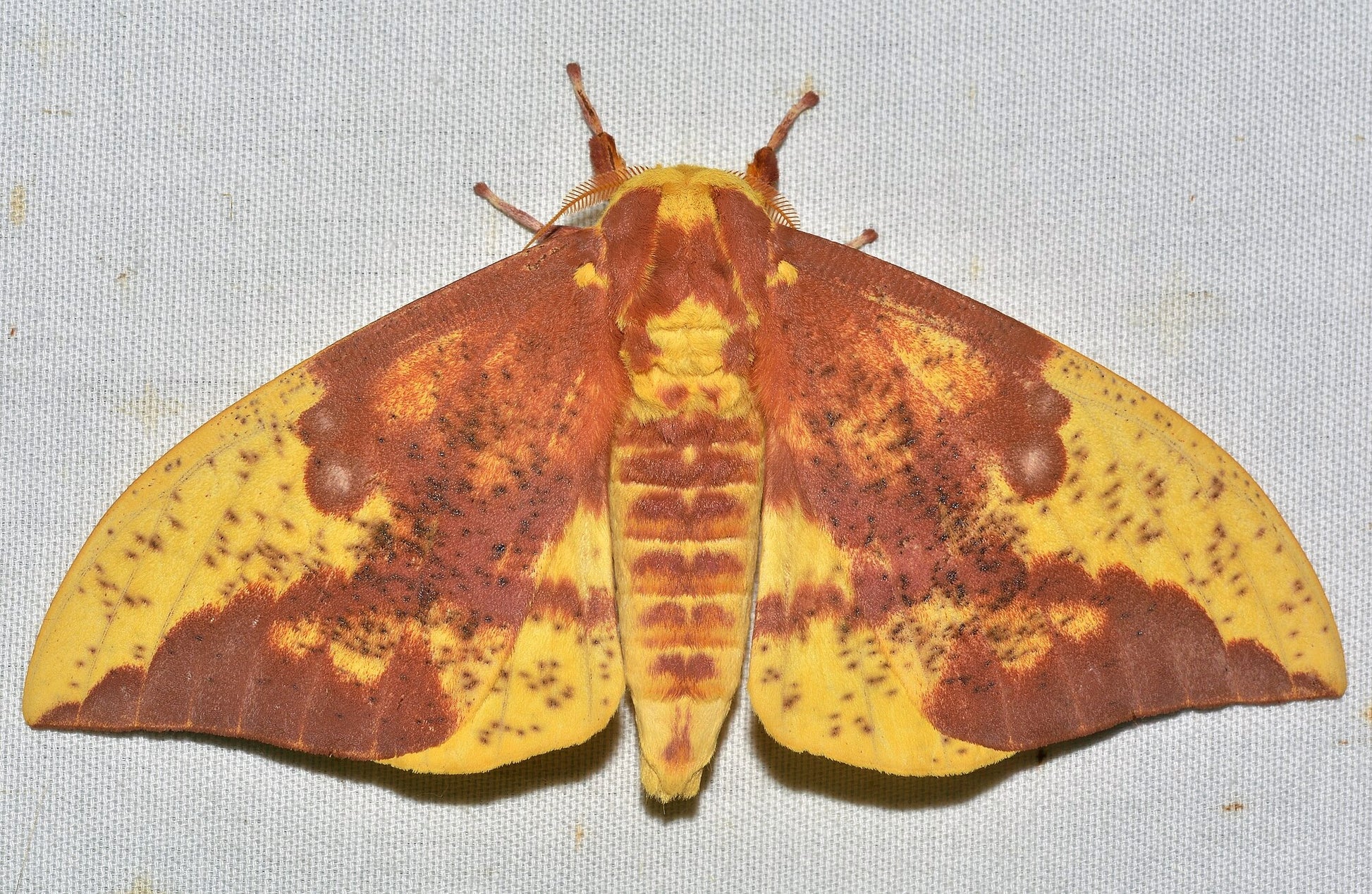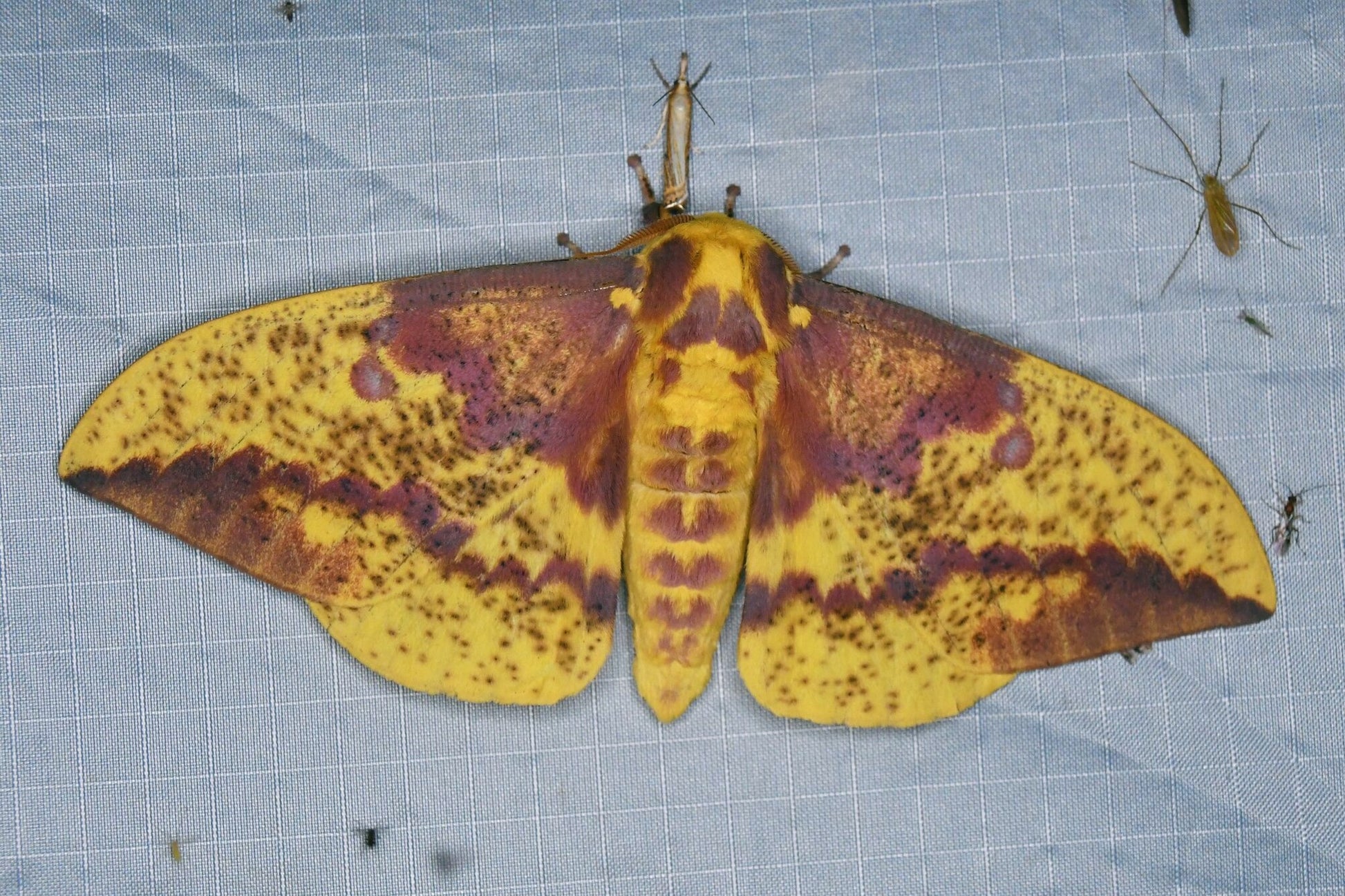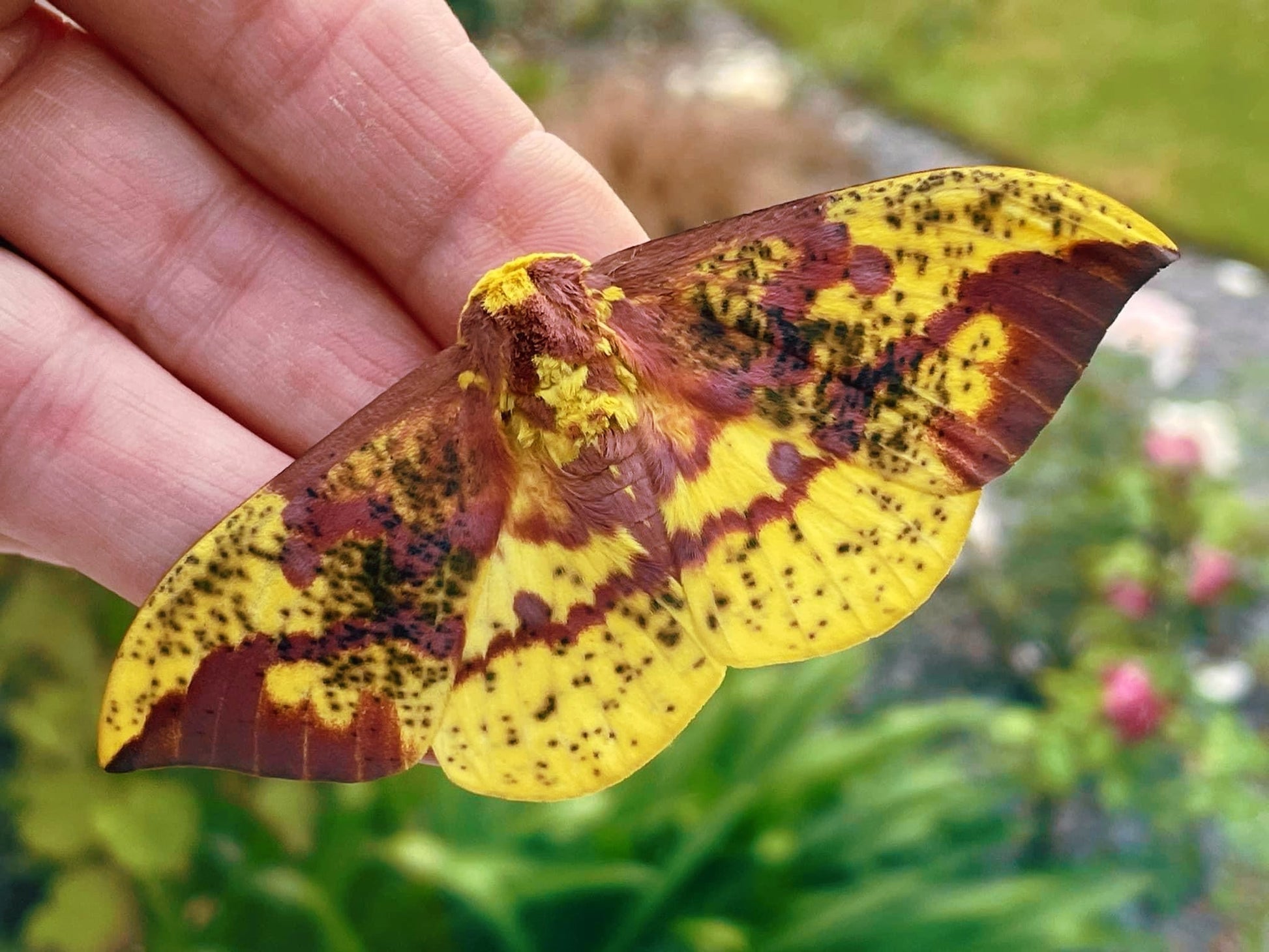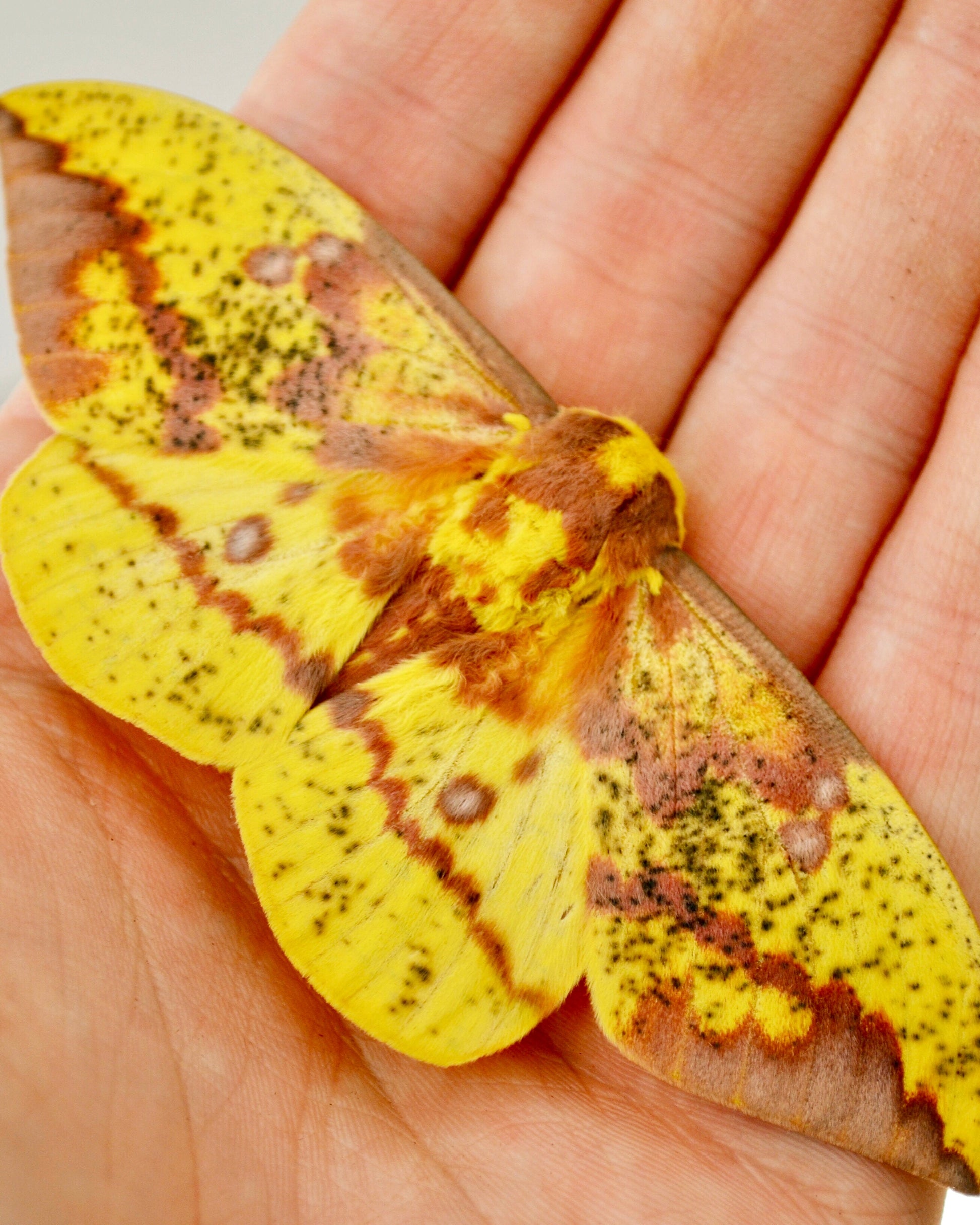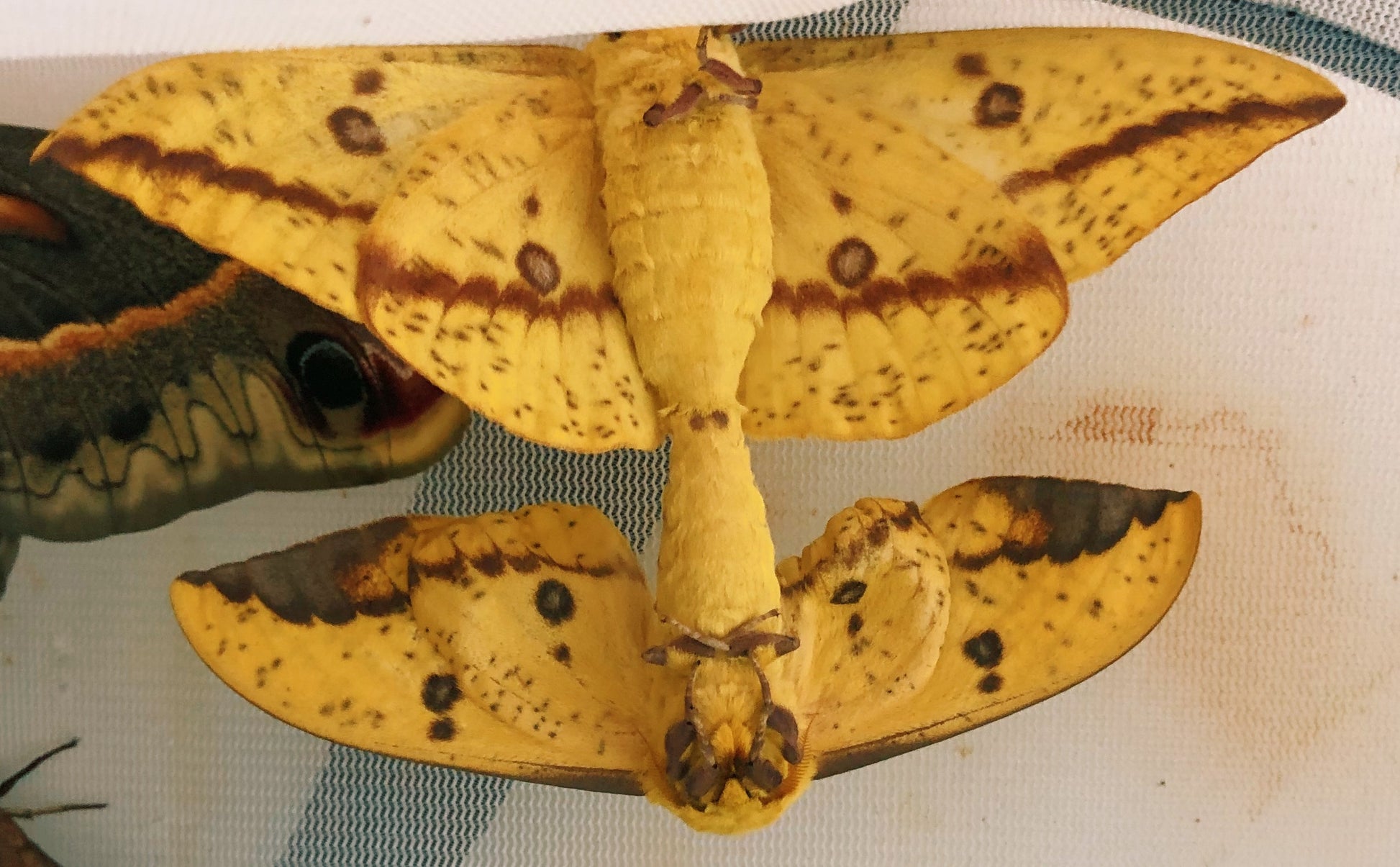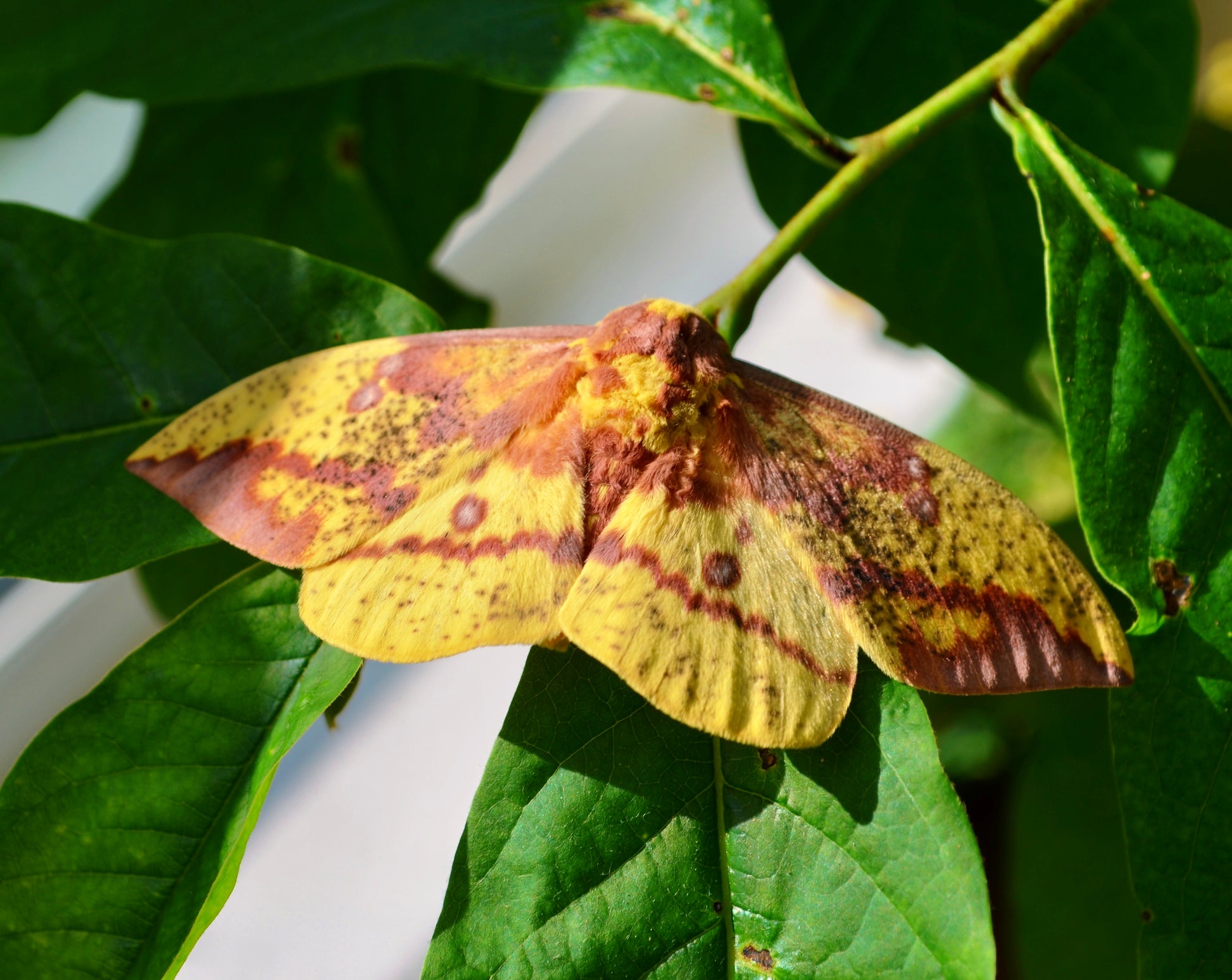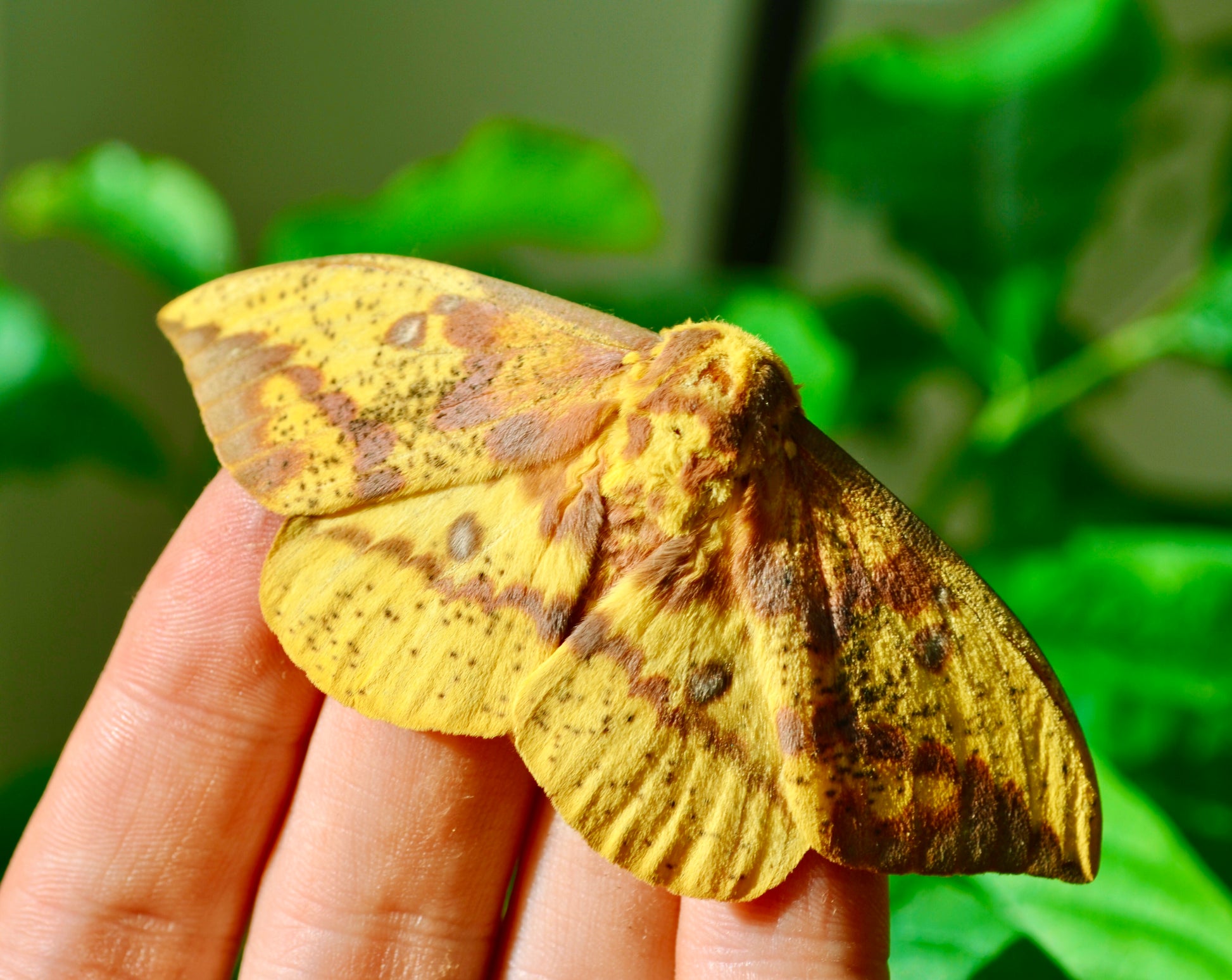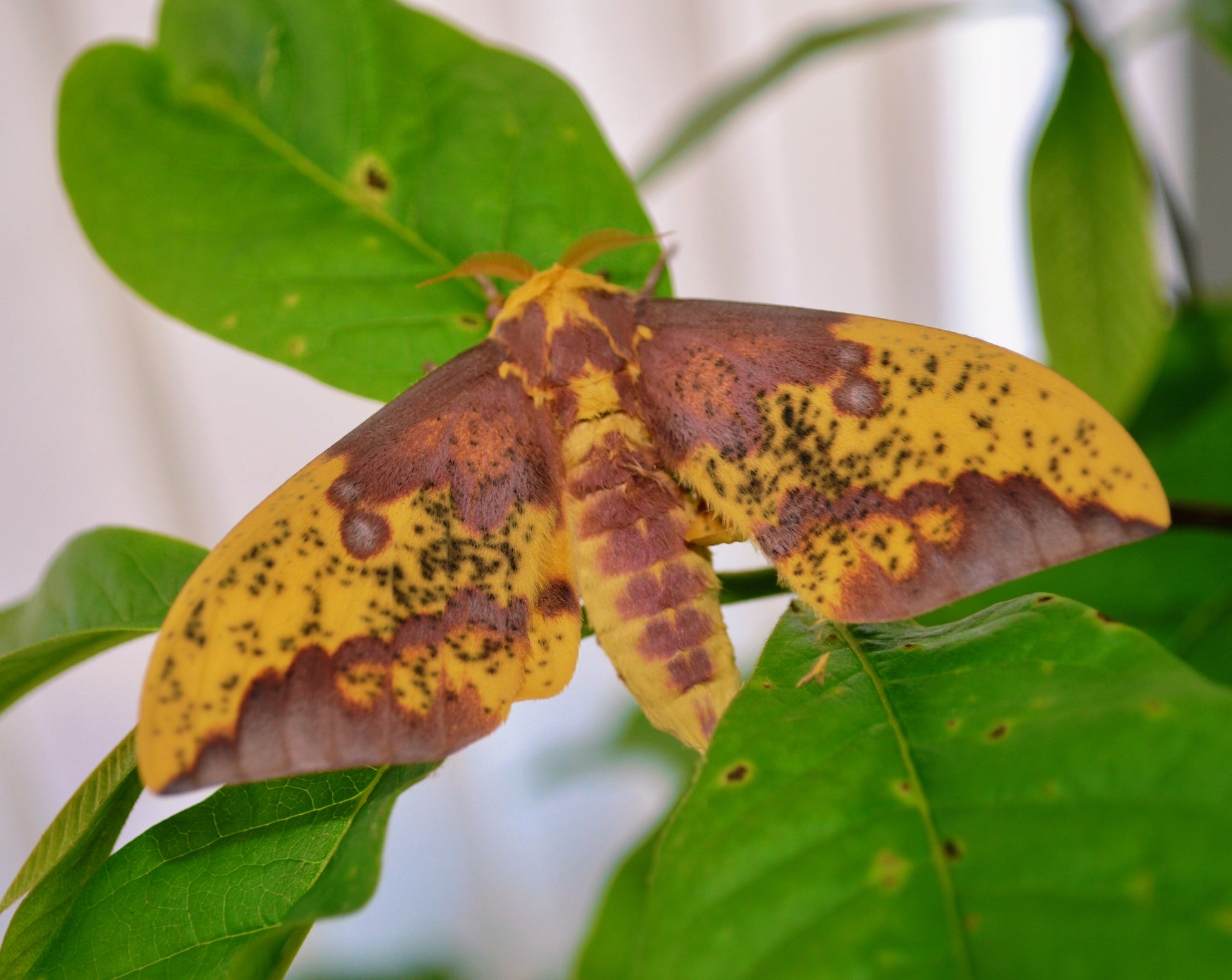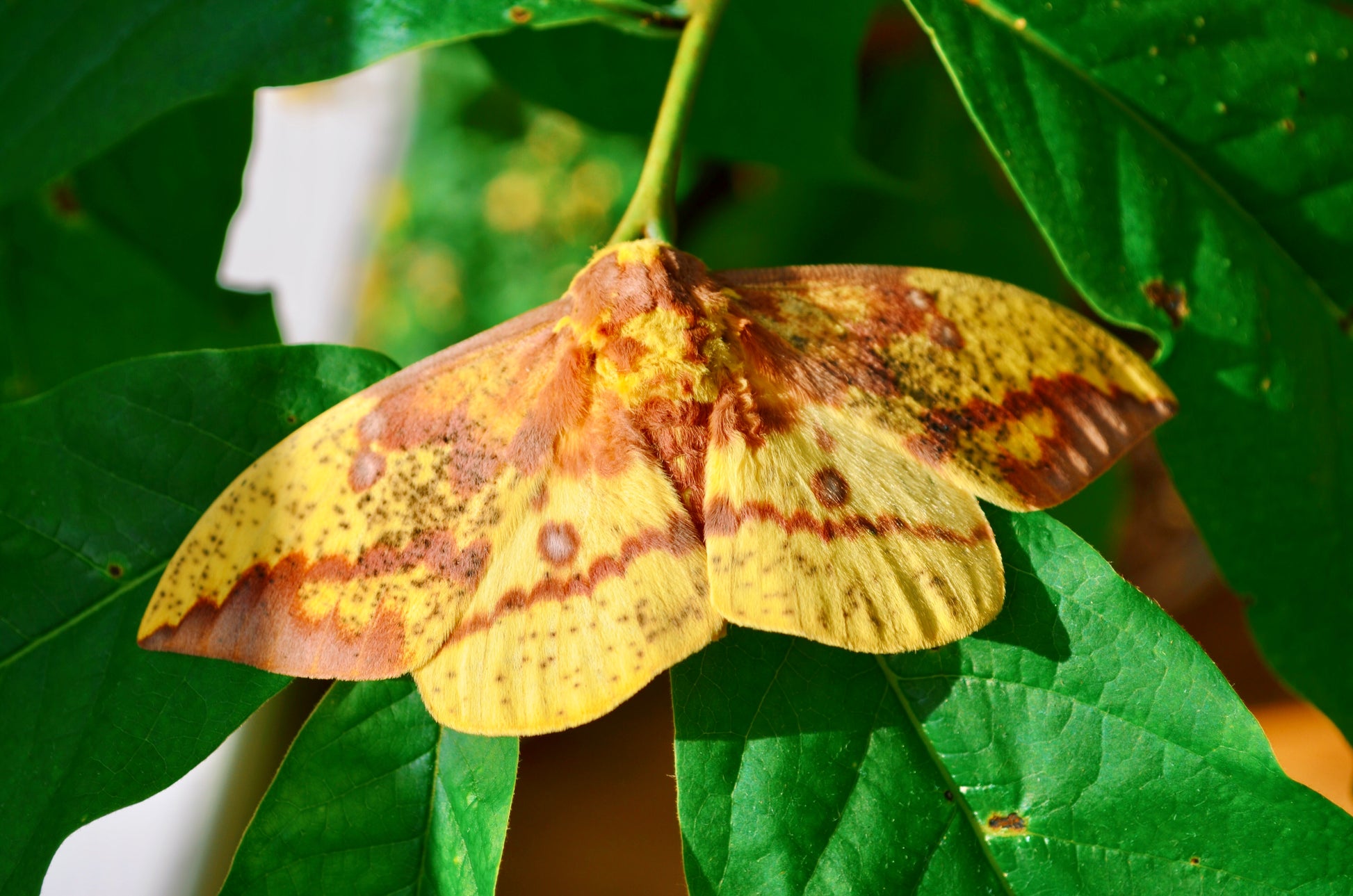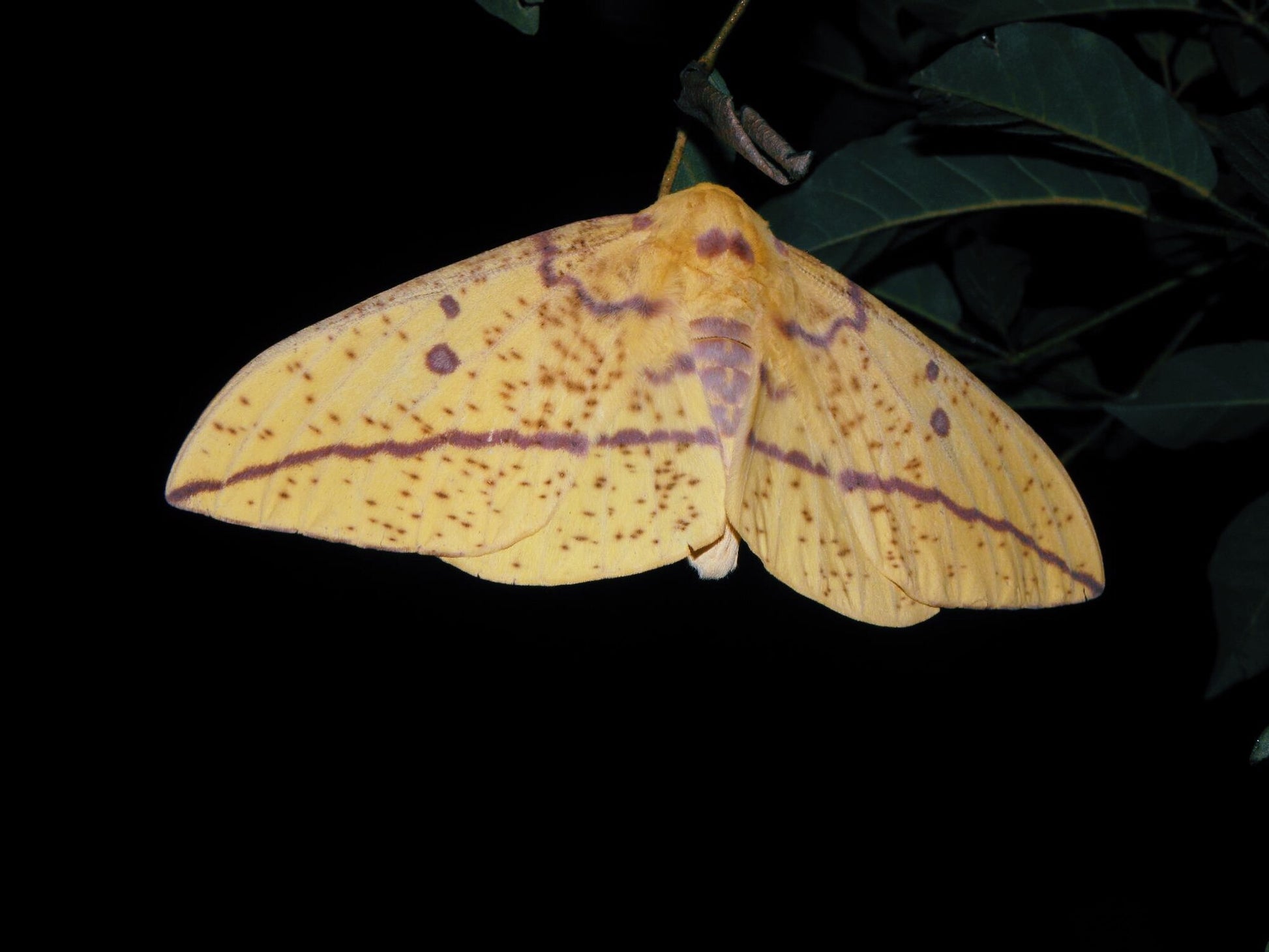Bugs & Butterflies UK
Imperial Moth PUPAE (Eacles imperialis)
Imperial Moth PUPAE (Eacles imperialis)
Couldn't load pickup availability
The Imperial Moth, Eacles imperialis, is one of the largest moths in North America. It has a wide distribution from the southern states of the USA up into Canada, typically flying in late spring to late summer, depending on the region. The moths are very colourful, usually in shades of yellow with brown patterning to give the impression of a dead leaf, however there are darker orange-red forms that occur apparently spontaneously in some populations. When at rest, this camouflague is excellent and allows the moth to disappear into its surroundings, avoiding the attention of predators, particularly birds.
The male moth is drawn to the female by her pheromones, which she releases at night time. They mate readily, and each female then lays 100-200 eggs over the next few days. Their lifespan is limited to around a week, as Giant Silk-moth species have no functional mouthparts and rely on energy from fats stored during the caterpillar stage. Eggs are yellow and almost transparent, turning darker as the caterpillar develops within - by the time they are ready to hatch, you can see the tiny caterpillar inside the egg. The caterpillar chews its way out, often consuming the egg shell as its first meal, before moving onto consume its host plants - including Oak, Sweet Gum, Pine, Walnut, and Ash, among others. The caterpillars feed for around a month, growing quickly and ultimately becoming very large, before burrowing to pupate among leaf litter or underground, remaining in this state until the following spring/summer until the moth is ready to emerge and begin the cycle all over again!
Difficulty - Easy (2/10)
Host plants - Sumac; Sweet Gum; Ash; Cherry; Walnut
Conditions - Requires air flow; room temperature.
Lifecycle - Single brood with moths emerging mid/late summer.
Share
